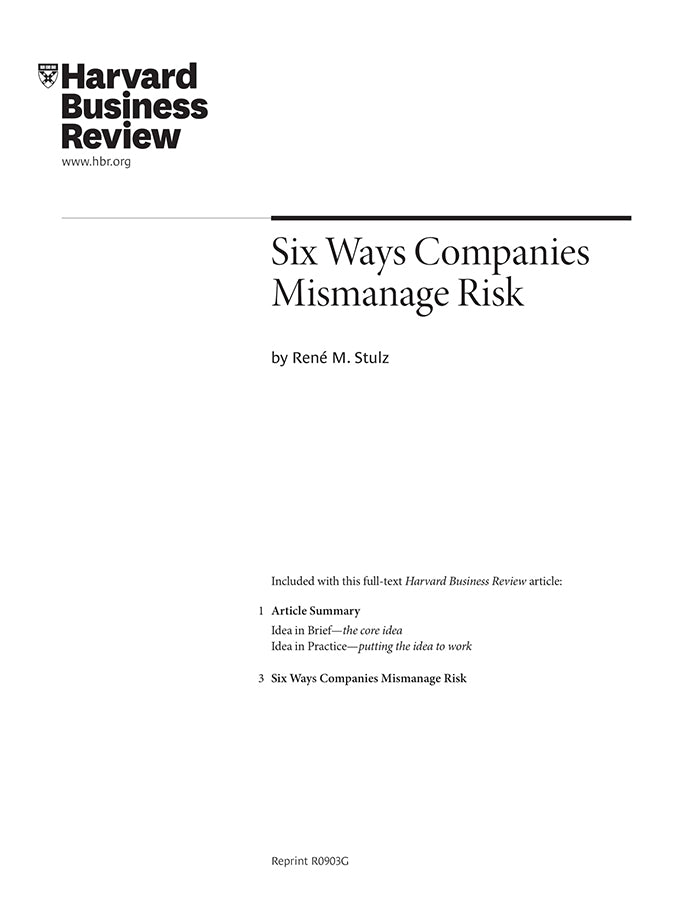Six Ways Companies Mismanage Risk
受取状況を読み込めませんでした
Financial risk management is hard to get right even in the best of times. It can take one of six paths to failure, nearly all of them exemplified in the current crisis. Relying on historical data. A risk manager who assessed real estate risk on the basis of statistics from the past three decades would have been sorely unprepared for the volatility of house prices in 2007. Focusing on narrow measures. A daily Value-at-Risk (VaR) measure is commonly used for securities trading. But a daily measure assumes that assets can be sold quickly or hedged, so it doesn't apply to portfolios with which the firm may be temporarily stuck. Overlooking knowable risks. Risk managers often distinguish among market, credit, and operational risks, which they measure differently and in isolation rather than cross-organizationally. They may also fail to assess new risks embedded in the instruments they use for risk mitigation. Overlooking concealed risks. Risk takers may deliberately hide their risks, as happened at the French bank Soci t G n rale in 2007. Or they may underreport them when their trading positions are complex and short-lived. Failing to communicate. Sometimes even the most scrupulous risk manager cannot clearly explain a state-of-the-art system to the CEO and the board. In such a case, their confidence in the system's capabilities may be unwarranted. Not managing in real time. It is difficult to hedge trading positions when their risk characteristics can change completely within a single day - as can happen, say, with barrier calls. The author advises practicing sustainable risk management: Never mind that catastrophic risks have extremely small probabilities; build scenarios for them and design strategies for surviving them anyway.
【書誌情報】
ページ数:12ページ
サイズ:A4
商品番号:HBSP-R0903G
発行日:2009/3/1
登録日:2012/3/28


